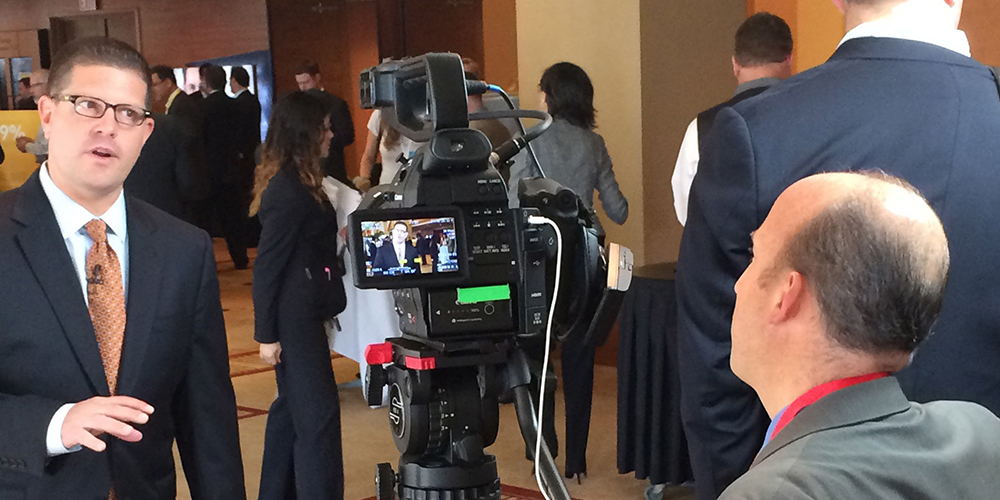Last week Morningstar hosted its 5th Annual ETF Conference in Chicago, bringing together some of the industry’s brightest minds and rising stars. The conversation took assessment of the current ETF landscape, speculating the next frontiers on the verge of taking over and fledgling trends on their way out.
The conference’s overarching message was that changes are coming in the ETF industry, whether they come by way of popularizing Strategic Beta (Morningstar’s take on the much-discussed smart beta funds), the ongoing debate of the pros and cons of active versus passive management, or through a total shake-up with non-transparent ETFs, which my colleague Joe Anthony (@JoeAnthony) critiqued on our blog last week.
With so many exciting shifts occurring, it’s no surprise that this year’s presenters had a lot of great information to share throughout the three-day event. Here are five soundbites from the conference’s speakers.
“If cash has paid you nothing, get invested in something.”
Dr. David Kelly, CFA, chief global strategist and head of global market insights team for JP Morgan Funds
Kelly spoke at length about the current market environment, likening the latest numbers to an Irish summer—“damp and disappointing.” However, he emphasized that profits can still grow in the environment and investors need to get back into the markets. He dispelled concerns that “the easy money has been made,” noting there has never been easy money. Kelly’s recommendation to see the best portfolio results right now: underweight fixed income, overweight US equities.
“You have to look at total return; you can’t just look at yield.”
Jerome Schneider, managing director at PIMCO
Schneider discussed the criteria he considers most important when selecting an active manager, and emphasized that in order to understand the value-add of an active manager, you need to look at every aspect of the manager’s strategy, particularly return. Effective risk management is both offensive and defensive, he said, and taking the “top down” approach recommended by PIMCO helps in selecting the best manager and mitigating risk for the investor.
“Comparison is the death of happiness.”
Chris Goolgasian, CFA, CPA, CAIA, head of portfolio management for North and South America at State Street Global Advisors
Loosely quoting literary great Mark Twain, Goolgasian sums up the current investor environment, making the point that investors are always looking for the next best thing, and they consistently think there is something out there they don’t know about. He stressed that the optimistic unknown doesn’t actually exist. Goolgasian and his fellow panelists encouraged investors to take a global view when looking for income.
Of note, Goolgasian offered another comment that summed up ongoing interest rate concerns nicely: “Rates will rise and they will rise over time. That’s a fact.”
“When is active management good? The answer is never.”
Eugene Fama, 2013 Nobel laureate in Economic Sciences and the Robert R. McCormick Distinguished Service Professor of Finance at the Booth School of Business, University of Chicago
Fama was the keynote speaker at the conference’s luncheon and his candid commentary was entertaining and refreshing—certainly a highlight of the conference. He is famous for his efficient market hypothesis and previewed his work developing a five-factor model to expand on his original three-factor model work. Fama disputed claims that you need an active manager to make the markets efficient, noting that waiting to trade until something is proved “thrice correct” isn’t the smartest or most effective approach. You’re better off buying passive products, he said.
“Never associate complexity with value-add.”
Dr. Wesley Gray, assistant professor of finance the Drexel University’s Bennett S. LeBow College of Business and executive managing member of Alpha Architect, LLC
Gray sought to eliminate the complexity of investing and encourage investors and advisors to get back to the basics—within reason. He told advisors to keep it simple—but not too simple. This means looking at empirical evidence to support the investment strategy and challenge the over-developed theories of asset allocation. Academics, he said, are not looking out for practitioner’s best interest.
The conversations covered a wide range of topics and trends impacting the ETF industry, but the message was clear throughout: there is a place for both active and passive management. It is matter of appropriateness based on both the individual investor’s appetite for risk and on the current market conditions. As such, advisors need to be flexible with their portfolios and be willing to adopt the best strategy for the environment.
This year’s conference was enlightening and I appreciate efforts to present a well-rounded view of the ETF landscape—past, present and future. It will be interesting to see how the speaker’s predications play out—and whether the SEC grants Eaton Vance exemptive relief.
For more soundbites from this year’s conference, take a look at #MStarETFUS and see what other attendees thought of the presenters and takeaways.
